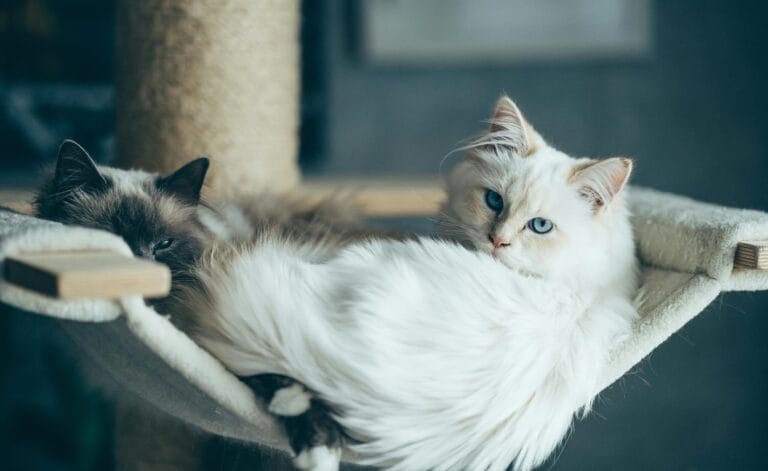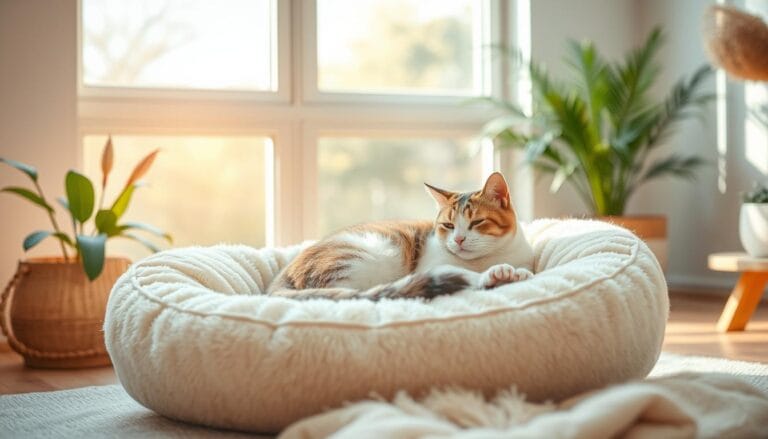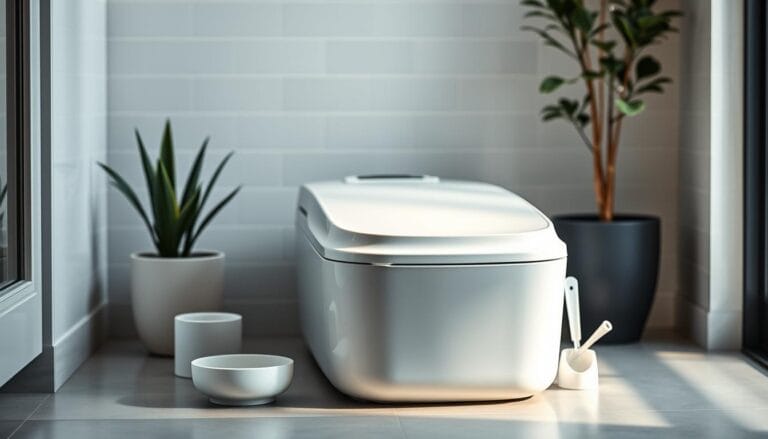What Can Cats Eat? 5 Powerful Foods Vets Recommend for Daily Nutrition
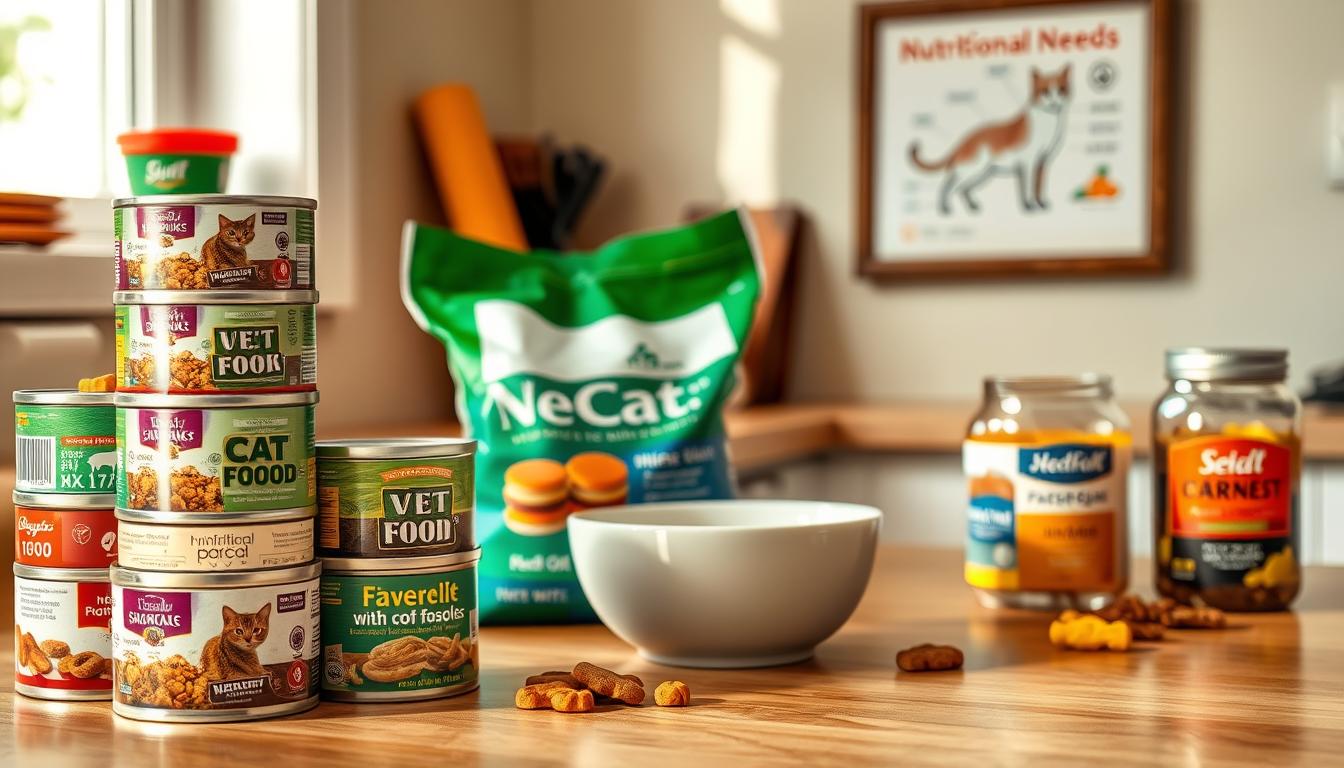
What Can Cats Eat ? are you wondering if your feline friend is getting the right nutrients from their daily diet? With so many options available, it can be challenging to determine the best food for your cat.
A well-balanced diet is crucial for maintaining your cat’s overall health and wellbeing. A cat nutrition guide can help you make informed decisions about your cat’s diet.
What Can Cats Eat ? understanding feline diet options is key to providing your cat with a healthy and balanced lifestyle. In this article, we will explore five vet-approved foods that are suitable for daily consumption.
Table of Contents
Understanding Your Cat’s Nutritional Needs
It’s key to know what can cats eat for a balanced diet. Cats have special dietary needs to stay healthy and happy.
Obligate Carnivores: What This Means for Diet
Cats need a lot of protein from animal sources. This is because they are obligate carnivores. It greatly affects their diet.
Essential Nutrients for Feline Health
Cats need specific nutrients for their health. These include proteins, vitamins, and minerals. They are vital for their wellbeing.
Protein Requirements
Cats need a diet rich in animal protein. High-quality protein sources are chicken, salmon, and turkey. These proteins help keep their muscles strong and their body working right.
Source: https://www.petmd.com/cat/nutrition/what-human-foods-can-cats-eat
Necessary Vitamins and Minerals
Cats also need certain vitamins and minerals. They need vitamin A, vitamin D, and calcium. These are important for their coat, skin, and bones.
What can cats eat to get these nutrients? It’s important to make sure your cat gets these nutrients. Knowing their nutritional needs helps you choose the right food for them.
The Importance of a Balanced Diet for Cats
A balanced diet is key for a cat’s health and happiness. Cats need a lot of protein from meat. What can cats eat to get the right mix of nutrients? The right mix keeps their energy up, fur shiny, and body working well.
Commercial Cat Food vs. Homemade Options
There are two main ways to feed cats: commercial food and homemade diets. What can cats eat from each option? Commercial cat food is easy and meets their nutritional needs. But, some owners like homemade diets to pick the ingredients themselves. Always talk to a vet before switching to homemade food to make sure it’s right.
- Commercial cat food offers a convenient and nutritionally balanced option.
- Homemade diets allow for control over ingredients but require careful planning.
Portion Control and Feeding Frequency
It’s important to control how much and how often you feed your cat. What can cats eat, and in what amounts? Too much food can make them fat, and too little can make them sick. How often you feed depends on your cat’s age, size, and how active they are. Usually, cats eat twice a day, but it can change.
Weight Management Considerations
Keeping your cat at a healthy weight is very important. Watching their weight and adjusting their food can stop obesity problems. Regular vet visits can help find the best weight and feeding plan for your cat.
What Can Cats Eat: Veterinary Nutrition Guidelines
Veterinary nutrition guidelines offer insights into safe, healthy foods for cats. What can cats eat according to these guidelines? It’s key for cat owners to know these guidelines to make good diet choices for their pets.
How Vets Evaluate Cat-Safe Foods
What can cats eat safely? Vets check food safety and nutritional value for cats. They look at the food’s nutritional content, allergens, and toxicity risk. High-quality protein sources are vital for cats, as they are meat-eaters.
The 80/20 Rule for Cat Nutrition
The 80/20 rule suggests 80% of a cat’s diet should be a main, nutritionally balanced diet. The other 20% can be supplemental foods or treats. This rule balances nutrition and variety.
Main Diet vs. Supplemental Foods
It’s important to know the difference between main diet and supplemental foods. What can cats eat as part of their main diet? The main diet should be a well-balanced, nutrient-rich cat food. What can cats eat as supplements? Supplemental foods add variety or extra nutrition, like cooked chicken or certain veggies.
Following veterinary guidelines and the 80/20 rule helps cat owners give their pets a balanced diet. This keeps cats healthy and happy.
Vet-Approved Food #1: What Can Cats Eat? High-Quality Commercial Cat Food
What can cats eat to stay healthy? Cats need a balanced diet, and the right commercial cat food can provide it. This type of food is made to meet cats’ nutritional needs. It’s a convenient and reliable way to ensure your cat gets the nutrients they need.
Dry Food Benefits and Considerations
Dry cat food, or kibble, is popular for its convenience and dental benefits. It helps keep your cat’s teeth clean. But, it’s important to pick a high-quality dry food that’s rich in protein and low in fillers and by-products.
Wet Food Advantages for Hydration
Wet cat food is great for keeping your cat hydrated. It’s also higher in protein and lower in carbs than dry food. This makes it a nutritious choice for cats.
How to Select the Best Commercial Options
Choosing the best commercial cat food means reading labels well and looking for quality ingredients. Look for foods labeled as “complete and balanced” by the Association of American Feed Control Officials (AAFCO).
Reading Cat Food Labels Effectively
To read labels well, start with the ingredient list. What can cats eat safely starts with knowing what’s inside their food. Good cat food lists a named protein source (like chicken or salmon) first. Avoid generic terms like “meat” or “by-products.” Also, check the nutritional content to make sure it fits your cat’s needs.
Identifying Quality Ingredients
Quality ingredients are key for your cat’s health. What can cats eat to get the best nutrition? Look for whole grains, fruits, and vegetables. They provide important nutrients. Avoid fillers and artificial preservatives. Choosing food with quality ingredients helps your cat stay healthy.
Vet-Approved Food #2: What Can Cats Eat? Lean Cooked Poultry Tips
Vets often suggest lean cooked poultry for cats. It’s a safe and healthy choice. But, it must be prepared right.
Chicken: Preparation and Benefits
What can cats eat that’s high in protein and low in fat? Chicken is a top pick for cat owners. It’s full of protein and low in fat when cooked right. Make sure to cook it well to avoid harmful bacteria.
Benefits of Chicken for Cats:
- High-quality protein source
- Rich in essential amino acids
- Low in fat when cooked without skin
Turkey as a Nutritious Alternative
Turkey is another lean option. What can cats eat that’s nutritious and safe? Turkey is as nutritious as chicken. But, cook it well and remove bones and skin for safety.
Nutritional Benefits of Turkey:
- Excellent source of protein
- Contains vital vitamins and minerals
- Can be a novel protein source for cats with sensitivities
Proper Cooking Methods for Safety
Cooking poultry right is key for your cat’s safety. Always cook chicken and turkey without harmful seasonings or oils.
Removing Bones and Skin
Before giving cooked poultry to your cat, remove bones and skin. Bones can cause harm, and skin is too fatty.
Portion Recommendations
The right amount of cooked poultry depends on your cat’s size, age, and activity. What can cats eat in moderation? Treats like poultry should not be more than 10% of their daily calories.
| Cat’s Weight | Recommended Daily Poultry Portion |
|---|---|
| 5 lbs | 1-2 tablespoons |
| 10 lbs | 2-3 tablespoons |
| 15 lbs | 3-4 tablespoons |
Feeding your cat lean cooked poultry can be healthy. But, do it right. Always talk to your vet about your cat’s diet.
Source: https://www.webmd.com/pets/cats/ss/slideshow-people-foods-cats-can-eat
Vet-Approved Food #3: What Can Cats Eat? Select Fish Varieties
Certain fish are safe for cats and offer health benefits. Fish can add essential proteins and fatty acids to a cat’s diet.
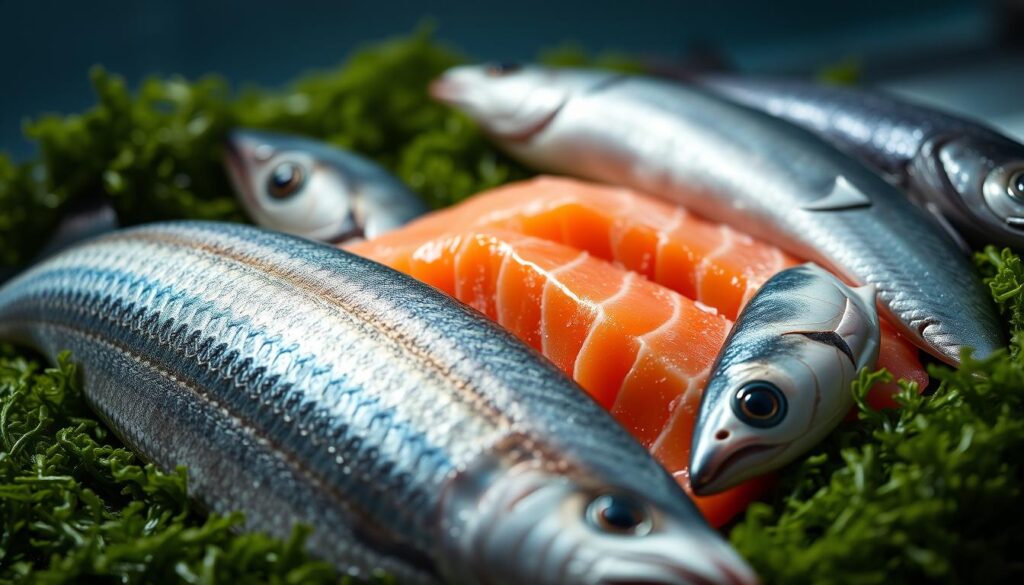
Salmon and Omega-3 Benefits
What can cats eat to get omega-3 fatty acids? Salmon is an ideal food for cats thanks to its omega-3 fatty acids. These nutrients help maintain a healthy coat and support heart health. They also reduce inflammation, enhance brain function, and help treat arthritis in older cats.
“Omega-3 fatty acids found in fish like salmon play a vital role in feline health, from reducing inflammation to supporting cognitive function.”
Sardines as a Nutritional Powerhouse
What Can Cats Eat? Sardines are good for cats too. They are packed with protein, calcium, and other nutrients. They have low mercury levels, making them safer than bigger fish. It’s important to serve sardines in water or their own juices without salt.
Fish Safety Considerations
Fish can be healthy for cats, but safety is key. Mercury in fish is a concern, especially in larger fish.
Mercury Concerns and Limitations
Fish like salmon and sardines have low mercury levels. They can be fed more often. But, it’s important to mix up your cat’s protein sources to avoid contaminants.
Proper Preparation Guidelines
When cooking fish for cats, make sure it’s cooked well to avoid bacteria. Fish should be cooked until it’s done, and all bones removed. Choose fresh, high-quality fish and avoid those with high mercury or poor storage.
Adding fish like salmon and sardines to your cat’s diet can be very beneficial. It provides them with a nutrient-rich food that supports their health and well-being.
Source: https://www.splootvets.com/post/top-10-healthiest-human-food-that-cats-can-eat
Vet-Approved Food #4: What Can Cats Eat? Cooked Eggs
Cooked eggs are a top choice for cats because they’re packed with nutrients. They offer cats essential proteins and vitamins. But, it’s key to cook them right to make sure they’re safe for your cat to eat.
Nutritional Profile for Cats
Cooked eggs are a great protein source for cats. They have all the amino acids cats need to stay healthy. They also have vitamins like D and B vitamins, and minerals like selenium. The protein in eggs supports muscle health and overall functions in cats.
Safe Preparation Methods
To safely give cooked eggs to your cat, make sure they’re fully cooked. Boil or poach them without salt or butter. Don’t give raw eggs to cats because of Salmonella risk. Cool the eggs down before serving to avoid burns.
Serving Frequency and Amounts
Give cooked eggs as a treat, not a full meal. Treats should not make up more than 10% of your cat’s daily calories. A small amount, like a teaspoon or a quarter of an egg, is enough once or twice a week.
Combining with Other Foods
You can mix cooked eggs with other safe foods to make meals more interesting. For example, add a bit of cooked egg to their regular food or with cooked chicken or fish. Always add new foods slowly to avoid stomach problems.
Adding cooked eggs to your cat’s diet safely can make their meals more nutritious and fun. It’s a great way to give them a tasty treat that goes well with their usual food.
Source: https://www.petmd.com/cat/nutrition/what-human-foods-can-cats-eat
Vet-Approved Food #5: What Can Cats Eat? Bone Broth
Bone broth is a top choice for cat owners. It’s made by simmering animal bones, like chicken or beef. This process releases lots of minerals and proteins that are good for cats.
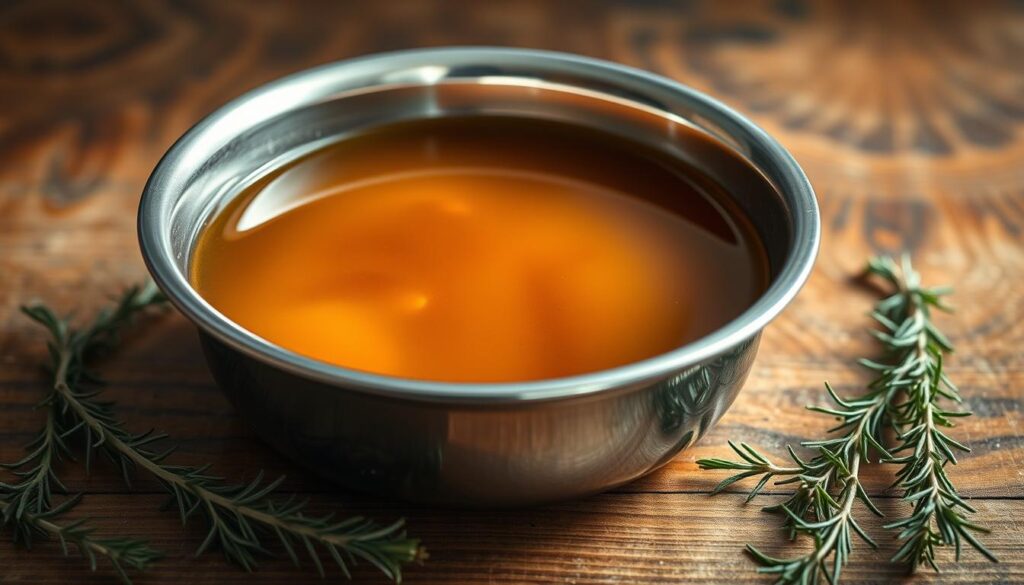
Making Cat-Safe Bone Broth at Home
Making bone broth at home is easy. It lets you pick the ingredients, making sure they’re safe for your cat. Use quality bones, skip the salt and onions, and simmer it for a long time to get all the nutrients.
Key steps include picking the right bones, simmering them for at least 24 hours, and straining the broth to remove any bone fragments or impurities.
Health Benefits for Cats
Bone broth is great for cats. It helps with hydration, joint health, and boosts the immune system. It can also help with digestion and overall health.
The anti-inflammatory properties of bone broth are good for cats with arthritis or other inflammatory conditions.
Serving Suggestions and Storage
You can serve bone broth as a treat or mix it with your cat’s meals. This adds moisture and flavor. It’s important to store it right to keep it safe and nutritious.
- Cool the broth to room temperature before refrigerating or freezing.
- Use airtight containers to prevent contamination.
- Reheat the broth gently before serving to preserve its nutrients.
Benefits for Senior or Ill Cats
Senior or ill cats can really benefit from bone broth. It’s easy to digest and full of nutrients. This can help manage health issues and improve their quality of life.
For senior cats, bone broth helps keep them hydrated and provides essential nutrients that might be missing in their regular diet.
Source: https://www.stellaandchewys.com/blogs/articles/human-food-cats-can-eat
Foods to Absolutely Avoid Feeding Your Cat
Some foods that are okay for humans can be bad for cats. It’s important for cat owners to know this to keep their pets safe.
Common Toxic Foods for Cats
There are certain human foods that are toxic to cats. These include:
- Chocolate: It has theobromine, which can make cats vomit, have diarrhea, and a faster heart rate.
- Onions and Garlic: These belong to the Allium family. They can cause anemia and harm a cat’s red blood cells.
- Grapes and Raisins: They can cause kidney failure in cats, but we don’t fully understand how.
Source: https://www.webmd.com/pets/cats/ss/slideshow-foods-your-cat-should-never-eat
Seemingly Harmless Foods That Pose Risks
Some foods that are safe for humans can still be risky for cats. For example:
- Raw or Undercooked Meat, Eggs, and Fish: They can have bacteria like Salmonella and E. coli, leading to food poisoning.
- Bones: They can splinter and cause internal damage or blockages.
- Caffeine: Like chocolate, caffeine can be toxic to cats because of its stimulants.
To show the dangers of these foods, here’s a table:
| Food | Potential Risk |
|---|---|
| Chocolate | Theobromine toxicity |
| Onions/Garlic | Anemia, damage to red blood cells |
| Grapes/Raisins | Kidney failure |
Emergency Steps If Your Cat Eats Something Dangerous
If you think your cat ate something toxic, act fast:
- Identify the Substance: Try to figure out what your cat ate.
- Contact Your Veterinarian or a Pet Poison Hotline: Services like the ASPCA’s Animal Poison Control Center (APCC) are available 24/7.
- Follow Advice: Your vet or the hotline may tell you to make your cat vomit or bring them in for treatment.
Knowing which foods are toxic to cats and acting quickly in emergencies can help keep your cat safe and healthy.
Special Dietary Considerations for Different Life Stages
Cats change a lot as they grow. They need a diet that matches their life stage to stay healthy.
Kitten Nutrition Requirements
Kittens need lots of protein and calories for fast growth. High-quality kitten food is key until they’re about a year old. It should have DHA for brain health and calcium for bones.
Adult Cat Dietary Needs
Adult cats need a balanced diet for health. Their needs change based on lifestyle, size, and activity. Moderate energy content and high-quality protein sources are vital.
Senior Cat Nutritional Considerations
Senior cats need fewer calories but still need key nutrients. Senior cat food helps with joint health and may include glucosamine and chondroitin.
Managing Common Health Conditions Through Diet
Cats with health issues like kidney disease or obesity need special diets. Cats with kidney disease might do better on a low-protein, low-phosphorus diet. Always talk to a vet for the best diet plan.
| Life Stage | Nutritional Needs | Recommended Foods |
|---|---|---|
| Kitten | High protein, high calories, DHA | High-quality kitten food |
| Adult | Balanced energy, high-quality protein | Adult cat food, varied protein sources |
| Senior | Fewer calories, joint support | Senior cat food, glucosamine, chondroitin |
Conclusion: Building a Healthy Everyday Diet for Your Cat
Creating a balanced diet for your cat means knowing what they can and can’t eat. Include vet-approved foods like high-quality cat food, lean cooked poultry, and select fish. Also, add cooked eggs and bone broth to their meals. This ensures they get all the nutrients they need for good health.
Feeding your cat safely means knowing which foods are risky. Keep toxic foods and seemingly harmless items out of their reach. Being careful about these dangers helps prevent emergencies.
Different life stages have different dietary needs. Kittens, adult cats, and senior cats all need special care in their diet. Choose the right foods and follow vet advice to keep your cat healthy and happy for a long time.
By following these guidelines, you can help your cat live a healthy life. Making sure they eat safely is very important. With the right knowledge, you can make the best choices for their diet.

